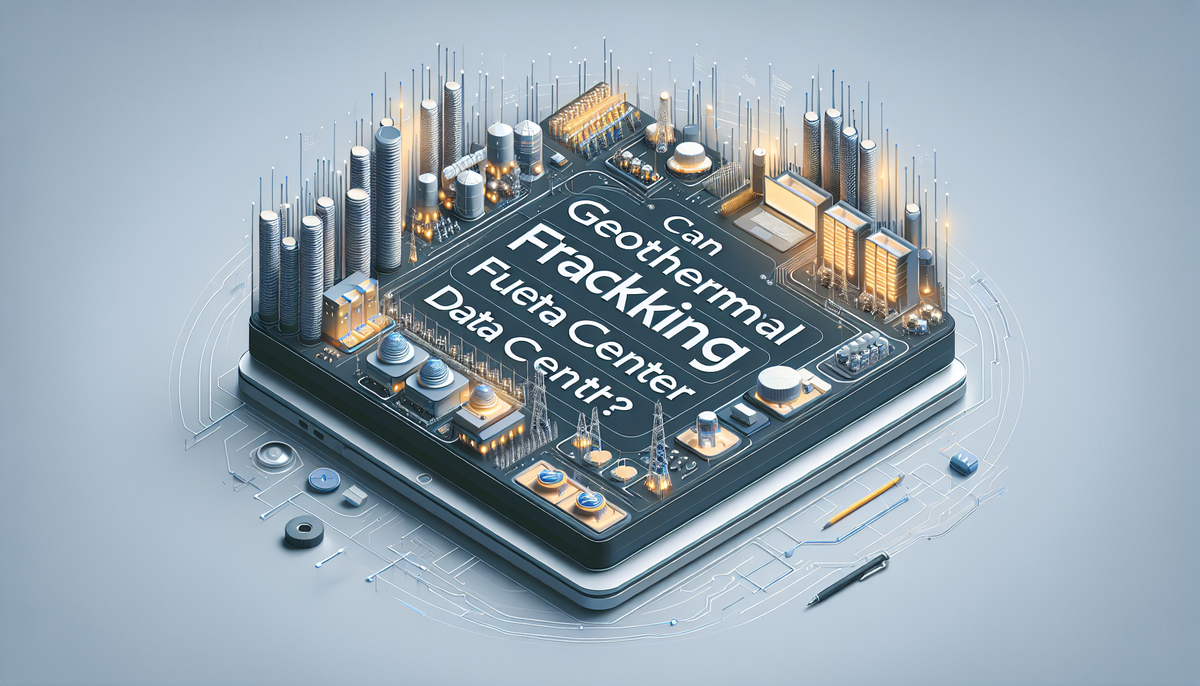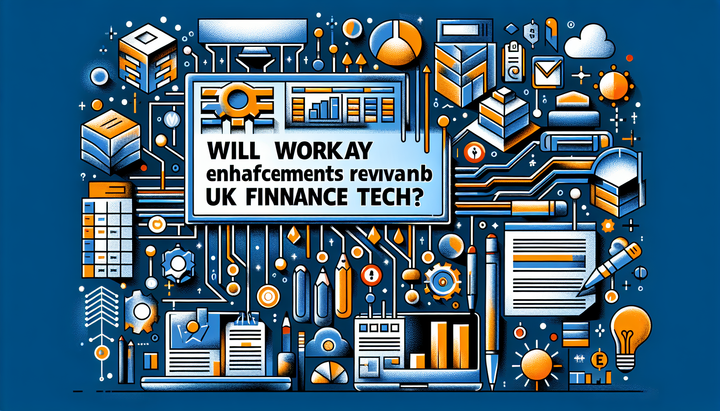Can Geothermal Fracking Fuel Data Center Growth?

Introduction: A Renewable Revolution for Data Centers
As digital transformation accelerates, data centers are experiencing explosive growth in energy demand. With emerging technologies like AI and cloud computing pushing operational needs to new heights, traditional power sources are under scrutiny. In this context, geothermal energy—enhanced by hydraulic fracturing techniques—is gaining attention as a potential savior for powering the digital infrastructure of tomorrow. This article explores how geothermal fracking might meet the considerable energy requirements of modern data centers, the economic and environmental challenges it faces, and the long-term implications for technology and sustainability.
The Rising Demand of Data Centers
The world’s data centers, sometimes referred to as 'bit barns,' have witnessed rapid expansion. Past years saw energy consumption grow from a modest percentage to nearly 4.5% of regional usage in certain areas. With projections indicating a surge fueled by AI training, cloud services, and the burgeoning Internet of Things (IoT), there is an urgent need for innovative solutions that are both sustainable and efficient.
Geothermal Energy: Tapping Earth's Natural Heat
Geothermal energy harnesses the Earth’s internal heat to generate electricity. Traditionally, this approach has been limited by the necessity for naturally occurring hydrothermal reservoirs. However, recent innovations have opened up new possibilities. Enhanced Geothermal Systems (EGS) use techniques reminiscent of hydraulic fracturing—better known in the oil and gas industries—to create artificial reservoirs. By drilling deep and fracturing rock formations, engineers can inject fluid to capture the Earth’s heat, thereby expanding geothermal energy’s geographic reach.
How Fracking Enhances Geothermal Accessibility
Hydraulic fracturing, or fracking, is typically employed to extract oil and natural gas. In the case of geothermal energy, the process is repurposed:
- Creating Artificial Reservoirs: By fracturing rock layers, the technique creates pathways for fluids to circulate and absorb heat.
- Expanding Geographic Range: Without relying solely on natural reservoirs, operators can implement geothermal projects in previously unsuitable areas.
- Rapid Deployment: Fracking-assisted systems can potentially be established more quickly than traditional geothermal plants.
Economic Considerations: The Green Premium
While the potential of geothermal fracking is immense, there are significant economic considerations. One of the defining challenges is the 'green premium'—a premium cost that operators are expected to pay for adopting cleaner, renewable energy solutions over conventional fossil fuels. Research indicates that a baseline premium of around 20% might be necessary to make geothermal energy economically viable at scale. Without such a premium, the economics in key markets could falter, thereby impeding adoption.
Regulatory and Political Influences
Governmental policy and regulatory frameworks play a pivotal role in the deployment of geothermal projects. Tax credits and federal support have historically been crucial in promoting renewable energy sources. However, recent trends suggest potential cuts or repeals in green energy subsidies, which could significantly impact early-stage geothermal projects. The report underscores that continued federal and state support is essential to nurture these technologies until they can compete more favorably with established energy sources.
Challenges and Controversies Surrounding Fracking
It is important to note that hydraulic fracturing remains a contentious issue. Environmentalists and communities in regions where fracking is practiced often cite concerns ranging from groundwater contamination to seismic disturbances. Even though geothermal fracking is aimed at heat extraction rather than fossil fuel recovery, public perception and regulatory hurdles remain critical factors. In regions like the UK, previous fracking attempts for oil and gas faced severe opposition following incidents linked to earthquakes.
Market Projections: Energy Supply Meets Digital Demand
The report from an independent research body suggests that geothermal energy could meet up to 64% of the additional power needs for data centers by the early 2030s. Key insights include:
- Regional Variances: The feasibility of geothermal solutions varies widely by geography. The technology appears most promising in western US markets but also shows potential in central and eastern clusters, including major tech hubs such as Chicago and Washington, DC.
- Direct Grid Integration: To mitigate delays commonly encountered when connecting to the main grid, the report advocates for direct, behind-the-meter applications, where geothermal systems power data centers on-site.
- Impact of AI Growth: Much of the increased electricity demand is anticipated to stem from AI initiatives, particularly in hyperscale facilities conducting training and inference operations.
Technical Breakthroughs and Industry Innovations
The future of renewable energy in tech infrastructure will likely be shaped by continuous innovation. Key developments include:
- Advanced Drilling Techniques: Improvements in drilling and fracturing technologies can minimize environmental impacts and reduce costs.
- Hybrid Energy Models: Integrating geothermal systems with other renewable sources such as solar and wind can create more resilient and versatile energy grids.
- AI-Driven Optimization: Utilizing AI to monitor and optimize energy use in geothermal plants may drive efficiency gains and operational reliability.
Lessons from Conventional Geothermal Installations
Drawing on lessons learned from traditional geothermal energy projects, several key takeaways are evident:
- Sustained Investment: Early investments must be nurtured with supportive policies and subsidies to bridge the gap between emerging technology and mainstream adoption.
- Community Engagement: Building trust with local populations through transparent environmental assessments and collaboration is essential to alleviate concerns associated with fracking.
- Scalability: Pilot projects should be carefully evaluated for scalability, ensuring that successful local implementations can be adapted for larger, global data center networks.
Environmental and Sustainability Implications
Geothermal energy is celebrated for its low to zero greenhouse gas emissions compared to traditional power sources. When integrated with data centers, it promises a dual benefit: powering high-demand digital infrastructures while minimizing environmental footprints. However, the widespread adoption of geothermal fracking is contingent on overcoming environmental challenges and ensuring that any potential risks—such as induced seismic activity—are rigorously managed.
The Road Ahead: Opportunities and Strategic Recommendations
For data center operators, energy providers, and policymakers, the potential of geothermal fracking presents several opportunities:
- Strategic Investments: Investing in pilot geothermal projects can help demonstrate feasibility and build a compelling case for broader deployment.
- Cross-Sector Collaboration: Collaboration between the tech industry, energy experts, and regulatory bodies will be crucial to align technological innovation with public policy and environmental safeguards.
- Long-term Planning: Incorporating geothermal solutions into long-term energy strategies ensures that data centers can meet future energy demands in a sustainable manner.
- Flexibility and Resilience: Developing hybrid energy models that combine geothermal, solar, wind, and other renewables can create a more robust energy supply chain capable of withstanding market and environmental fluctuations.
Expert Insights and Future Research Directions
Industry experts emphasize that while the promise of geothermal fracking is significant, it remains one of several potential solutions to the energy challenges of tomorrow’s data centers. Further research into optimized fracturing techniques, advanced materials for drilling, and AI-powered energy management will likely drive this innovation forward. Future discussions should focus on:
- Analyzing the long-term economic implications of adopting a green premium model in diverse market conditions.
- Exploring case studies of early geothermal installations and documenting lessons learned.
- Developing standardized environmental and safety protocols that address public concerns and regulatory requirements.
Conclusion: A Sustainable Future for the Digital Age
The drive toward renewable energy sources is reshaping the landscape of data center infrastructure. Geothermal energy, empowered by modern fracking techniques, offers an innovative pathway to meet the soaring energy demands of an increasingly digital world. Despite inherent challenges—from economic pressures to environmental debates—the potential benefits of a greener, more sustainable energy model are hard to ignore.
Industry leaders and policymakers must collaborate to navigate the complexities of this technology, balancing the need for rapid energy deployment with responsible environmental stewardship. As data centers continue to expand, geothermal fracking might not just be a stopgap solution, but rather a cornerstone of a robust, resilient, and renewable digital future.
Key Takeaways
- Geothermal fracking leverages advanced drilling methods to expand renewable energy sources beyond traditional limits.
- Economic viability hinges on a green premium, highlighting the need for supportive policy and investment.
- Direct, behind-the-meter applications offer a promising way to integrate geothermal energy with data center operations.
- Environmental and regulatory challenges remain critical, requiring ongoing research and community engagement.
- Collaboration across sectors is vital to fully realize the potential of geothermal power in the digital era.
This comprehensive analysis reveals not only the technical and economic potentials of geothermal fracking but also the broader implications for sustainable energy practices in technology. With a forward-thinking approach, data centers can transform into models of clean energy efficiency, setting a benchmark for how emerging tech infrastructure can coexist sustainably with our planet.



Comments ()